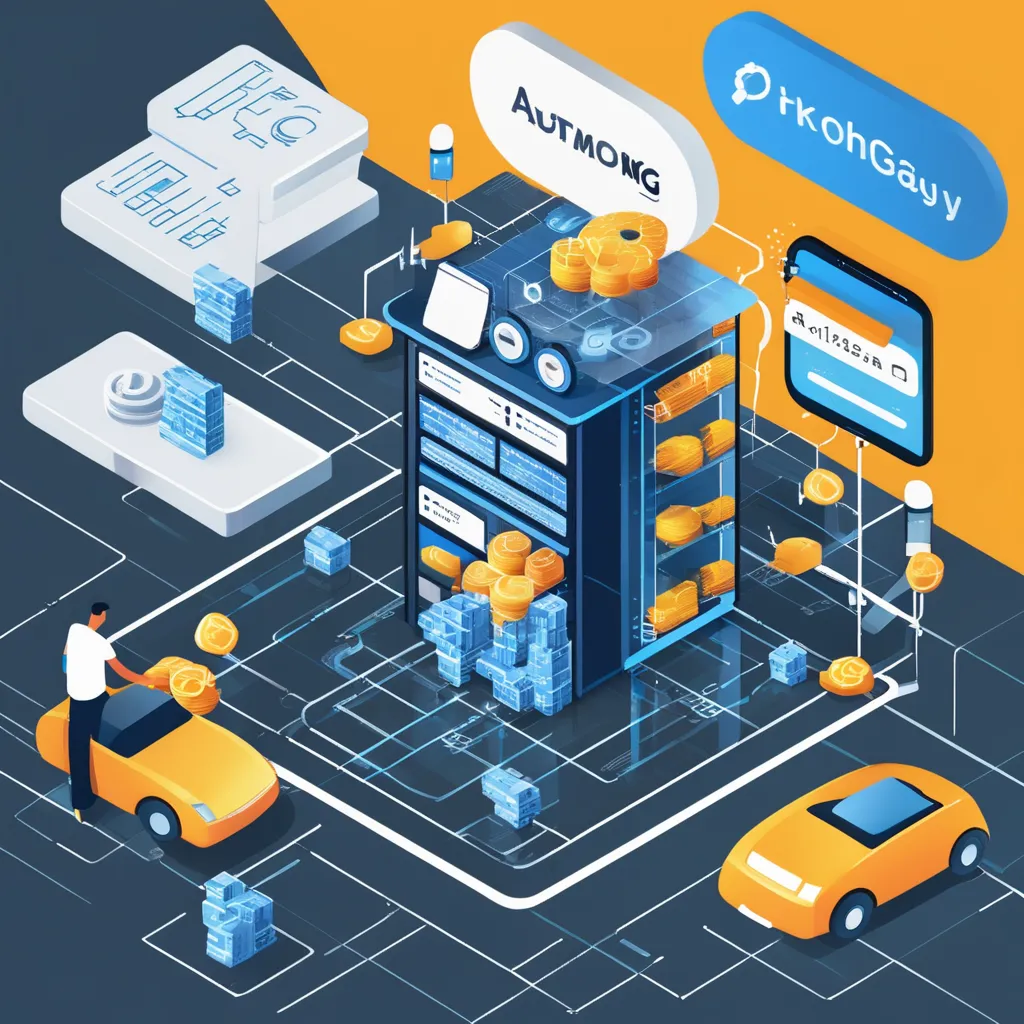Ecommerce automation strategies are revolutionizing the way businesses operate in today’s fast-paced digital marketplace. As competition intensifies, it’s crucial for ecommerce companies to stay ahead by adopting efficient and scalable solutions. By leveraging the right tools, ecommerce automation strategies allow businesses to automate time-consuming tasks like inventory management, order fulfillment, customer service, and marketing.
This not only saves valuable time but also enhances operational efficiency, ensuring that resources are used more effectively. With streamlined processes, ecommerce businesses can focus on growth, improve customer satisfaction, and, ultimately, boost sales. In this blog, we’ll explore six powerful API automation strategies that can significantly elevate your ecommerce business. These ecommerce automation strategies are designed to streamline your operations, increase your reach, and drive sustainable growth, giving you a competitive edge in the digital marketplace. Whether you’re looking to automate repetitive tasks or create a more personalized customer experience, these strategies will provide actionable insights to help you scale your business with ease.
Table of Contents
1. Automating Order Processing: Speed and Accuracy at Scale
When it comes to ecommerce automation strategies, automating your order processing system is one of the most impactful areas to focus on. Manually handling orders can lead to delays, errors, and a less-than-ideal customer experience. By integrating APIs with your ecommerce platform, you can streamline the entire process—from the moment a customer places an order to when it’s shipped.
For example, automated systems can instantly update inventory levels, send order confirmations to customers, and create shipping labels—all without manual input. This level of automation not only speeds up the process but also ensures accuracy, minimizing the risk of human error.
Using a service like ShipEngine or EasyPost for shipping integrations can further enhance this process. These tools connect directly to your ecommerce platform and automate shipping tasks, including label creation, tracking, and even multi-carrier shipping options.

2. Personalized Marketing Campaigns: Deliver Targeted Content
Another key component of ecommerce automation strategies is personalizing your marketing efforts. Automated systems can track customer behavior, segment your audience, and deliver tailored campaigns at scale. Whether it’s sending an email with product recommendations or offering a discount on a customer’s birthday, automation allows you to create a more personalized experience without manual intervention.
Using APIs to integrate customer relationship management (CRM) systems with your ecommerce platform enables you to capture valuable data, like purchase history and browsing behavior. From there, automation tools like Mailchimp or Klaviyo can trigger personalized email campaigns based on these insights, boosting conversion rates and customer loyalty.
By automating marketing tasks, you can reach the right customer at the right time, delivering the content they’re most likely to engage with and purchase from.

3. Inventory Management: Keep Stock Levels in Check
Effective ecommerce automation strategies are not complete without integrating inventory management systems. One of the most common issues ecommerce businesses face is stock-outs or overstocking. Both scenarios can lead to lost sales or excess costs, respectively.
With an automated inventory system, you can sync your ecommerce platform with suppliers or warehouses to automatically update stock levels, track inventory turnover, and even trigger reorders when stock reaches a certain threshold. This prevents issues like overselling products that are out of stock or failing to replenish popular items on time.
A platform like TradeGecko or NetSuite can be integrated with your ecommerce site to offer real-time inventory tracking, ensuring that your stock levels are always accurate and that you never run into the problem of a surprise out-of-stock notice for your customers.

4. Customer Service Automation: Improve Response Time and Satisfaction
Customer service is a critical area where ecommerce automation strategies can make a huge impact. With automated tools in place, you can handle customer inquiries more efficiently, providing quicker responses and higher satisfaction rates.
For instance, integrating an AI-powered chatbot like Intercom or Drift into your ecommerce site can help handle common customer inquiries instantly. These bots can provide product recommendations, process returns, track orders, and even resolve basic customer issues—all without human intervention.
In addition, automating ticketing systems using ecommerce automation strategies ensures that customer issues are efficiently routed to the right support agents, reducing the time it takes to address inquiries. By leveraging these ecommerce automation strategies, you can streamline customer support processes, ensuring that every issue is handled promptly and professionally. This not only enhances the customer experience but also boosts customer satisfaction by providing timely solutions to their problems.
By reducing response times, your business can foster stronger customer relationships, improving retention and increasing the chances of repeat business. Ultimately, ecommerce automation strategies in ticketing systems allow you to provide faster, more accurate support, which can be a key differentiator in today’s competitive ecommerce landscape.

5. Payment Processing: Seamless and Secure Transactions
In the world of ecommerce automation strategies, one of the most important areas to automate is payment processing. Automating payments helps you avoid errors and delays, making the checkout process smoother and more secure for customers.
Using API integrations with payment processors like Stripe, PayPal, or Square allows you to securely handle payments across various methods, including credit cards, digital wallets, and even local payment options. Automated systems can also handle invoicing, refunds, and receipts, ensuring everything is processed seamlessly and promptly.
Beyond payments, these systems can trigger automated fraud detection measures to protect both the business and customers. By incorporating automation into your payment system, you increase security and provide a more fluid purchasing experience, which can drive up sales and reduce cart abandonment.

6. Shipping and Delivery Notifications: Keep Customers Informed
When it comes to building trust with customers, keeping them informed is crucial. Automated shipping and delivery notifications are an essential part of ecommerce automation strategies that enhance the customer experience.
By integrating your ecommerce platform with shipping APIs, you can unlock a new level of efficiency in your operations. With ecommerce automation strategies, automatic tracking updates can be sent to customers via email or SMS, keeping them informed at every stage of the delivery process. Whether it’s notifying customers when their order has been shipped, when it’s out for delivery, or when it has arrived at their doorstep, these ecommerce automation strategies offer a seamless and transparent experience.
This level of visibility not only reduces customer inquiries but also enhances satisfaction, as customers feel more in control of their purchases. Moreover, by providing real-time shipping updates, you can minimize the number of refund requests related to shipping issues, further improving customer retention and loyalty. Integrating shipping APIs is just one of many powerful ecommerce automation strategies that can elevate your business, ensuring smoother operations and a better customer experience.
Moreover, integrating with delivery services like FedEx, UPS, or DHL allows you to provide real-time updates on delivery status, making it easier for customers to track their purchases and plan accordingly.

Conclusion
Adopting ecommerce automation strategies through API integrations is one of the most effective ways to scale your business. From streamlining order processing to personalizing marketing efforts and automating customer service, these integrations offer a range of benefits that drive efficiency, reduce manual errors, and enhance the customer experience.
As ecommerce continues to evolve, businesses that embrace automation will be well-positioned to stay competitive and thrive in a crowded market. Whether you’re looking to automate inventory management or deliver more personalized marketing campaigns, the right API tools can unlock new growth opportunities and boost your sales.
If you’re ready to dive into ecommerce automation, check out this detailed guide to ecommerce API integrations, which will help you get started on optimizing your ecommerce operations.
By embracing automation, you’re not just keeping up with trends—you’re paving the way for sustained success in the ever-changing world of ecommerce.
If you’re eager to take your ecommerce operations to the next level, don’t miss our latest blog post, “Ecommerce API Automation: 5 Game-Changing Ideas to Supercharge Your Business”. In this post, we dive deeper into how API automation can be a true game-changer for streamlining your processes, from managing inventory to personalizing customer experiences.
If you found the automation strategies outlined in this article useful, our 5 game-changing ideas will provide even more actionable insights to transform your ecommerce business. Whether it’s improving efficiency, boosting sales, or enhancing customer satisfaction, this guide shows how ecommerce API automation can elevate every aspect of your operations. Ready to supercharge your business? Check out the full blog post here and start unlocking the true potential of automation today!

